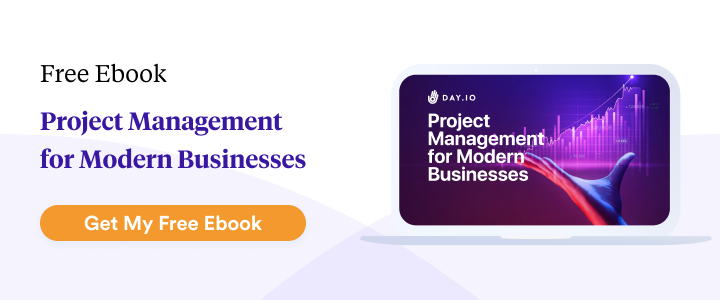For some companies, the project management process is a breeze. They’ve established a repeatable process and their team is well-trained in how to use it. However, other companies — even those that have been in business for many years — find their projects consistently falling flat or not meeting deadlines. What’s the difference?
In most cases, it comes down to two things: how well the company understands and implements organizational development (OD), and how effective its project management strategy is. In this article, we’ll discuss three keys to successful project & organizational development — a critical success factor for any business.
Let’s get started!
What is organizational development?
While organizational development may at first sound like a simple concept, it’s actually a complex field with varying interpretations. Generally speaking, OD is the application of behavioral science knowledge and techniques to help organizations improve their effectiveness. This can include improving productivity, communication, teamwork, and morale.
When companies have an OD intervention, they are usually trying to achieve one of the following goals:
- Enhancing individual and team productivity
- Improving communication and collaboration among employees
- Developing a more positive, productive work culture
- Increasing organizational efficiency and effectiveness
- Addressing challenges posed by changes in the business environment
- Helping the organization adapt to new or unexpected situations
It doesn’t have to be when a company is at its breaking point; however, that’s when OD is often called in to help, as people tend to neglect their organizational health when everything appears to be going well at face value.
What does an OD intervention look like in practice?
There’s no one-size-fits-all answer when it comes to working on organizational development. Usually, however, the process is broken down into a few different stages:
1. Assessment
The first step is to assess the current situation and identify the areas that need improvement. It’s like a medical diagnosis; you can’t proceed without knowing what the problem is. This can involve surveys, interviews, and focus groups with employees at all levels of the organization.
2. Planning
Once the areas that need improvement have been identified, it’s time to come up with a plan for how to address them. This usually includes setting specific goals and objectives, as well as the methods and tools that will be used to achieve them.
3. Implementation
The final step is putting the plan into action. This can involve changing policies and procedures, training employees on new skills, or even restructuring the organization itself.
This process should always be followed up with regular monitoring and evaluation to ensure that the desired results are being achieved.
It’s important to note that change doesn’t happen overnight, and there will likely be bumps in the road along the way. However, with perseverance and a willingness to adapt, organizational development can bring about real, lasting change.
The three keys to successful organizational development
There are three primary keys to successful organizational development: People, Processes, and Structure. Let’s take a closer look at each of them.
Key 1: People
The people within an organization are your first key to a successful project or organizational development initiative. The right team in place can make all the difference when it comes to accomplishing tasks and meeting deadlines. You need individuals who are capable of working together cooperatively, as well as independently when needed.
It is also important to have the right mix of personalities within your team. You need individuals who are creative and innovative, as well as those who are more analytical and detail-oriented. When team members have different strengths and weaknesses, it can create a more well-rounded team that is better equipped to handle any challenges that may come up.
So, why are people critical to project and organizational development? It comes down to one fact: your business is based almost entirely around people. People are at the heart of every organization, so it’s important to have a team in place that can work together to achieve common goals.
When focusing on the people aspect of your organizational development initiative, there are a few questions you should ask:
- What skills and strengths does my team have?
- What can we do to improve our team’s overall effectiveness?
- How can we better work together as a team?
- What are the personalities of each of my team members?
- What is the right mix of personalities for our team?
- How can we get everyone on the same page?
The answers to these questions will help you create a team that is capable of achieving great things.
In terms of practical steps you can take to improve the people aspect of your project or organizational development initiative, here are a few suggestions:
- Implement performance improvement plans for underperforming team members and skills development plans for team members who stand out in certain areas.
- Encourage team members to take on new challenges and responsibilities.
- Create a team charter that outlines the team’s goals, objectives, and values.
- Hold regular team meetings to discuss progress, issues, and solutions.
- Encourage team members to socialize outside of work.
The bottom line is that the people within your organization are critical to project and organizational development. By taking steps to develop your team’s skills and strengths, and by encouraging cooperation and communication, you can create a team that is capable of achieving great things.
Key 2: Processes
People are an essential component of successful project and organizational development, and processes are the means by which they interact. Processes are the tools we use to achieve our objectives and should be designed with the end in mind. They need to be efficient and effective, while also being adaptable so that they can grow and change as our projects and organizations do.
The best processes are simple, concise, and easy to understand. They are also repeatable so that everyone involved knows what is expected of them and how they fit into the bigger picture. Well-designed processes help to ensure that everyone is working towards the same goal and that tasks are completed in a consistent and timely manner.
When it comes to project and organizational development, processes are key. By taking the time to create effective processes and using them to guide our interactions, we can make sure that everything runs smoothly and that everyone is working towards the same goal.
Wondering whether your processes are bringing down the success of your project or organization? Check for these three signs that you may need to tweak them:
- Communication is breaking down, leading to frustration and confusion.
- Tasks are not being completed in a timely or consistent manner.
- People are not working together as effectively as they could be.
- There’s an increase in workplace conflict.
If you’re experiencing any of these issues, it may be time to revisit your processes and make some changes. Here are a few strategies to get you started:
- Simplify complex processes so that they are easy to understand. One of the best ways to do this is by moving onto a software tool that can help to automate and track tasks.
- Create checklists and templates so that everyone is working from the same playbook.
- Encourage input from all stakeholders when designing processes, so that everyone has a say in how they work.
By following these tips, you can create processes that are efficient, effective, and easy to understand. And with everyone on the same page, your project or organization will be running like a well-oiled machine.
Key 3: Structure
Finally, the backbone of your entire organization; the structure. A company’s structure is what allows it to grow and scale. It’s what defines how different parts of the company work together and who is responsible for what.
When it comes to developing structure, there are a few common options: functional, divisional, or matrix.
Functional structures are the most common, and they put all the people who do a certain job in one department — so you might have a marketing department, engineering department, and so on.
Divisional structures create smaller divisions within the company, each with its own head and budget. This can be helpful when a company is trying to target specific markets. Matrix structures are a mix of the two, with people organized by function and by division.
There’s no one right answer when it comes to structure — it depends on what works for your company and its goals. But whatever you do, make sure you’re constantly revisiting and tweaking your structure as your company grows.
Final thoughts on organizational development
If you are feeling confident in your business processes, and you are consistently hitting your goals, you may not need to worry about organizational development just yet.
Do keep in mind, however, that even the most successful businesses can benefit from time spent on organizational development — it’s never too late to improve your processes and make your business run even more smoothly.
If you are looking to improve your project or organizational development, we hope the keys outlined above will be of some help. Keep in mind that success will require effort and commitment from everyone involved, but it is definitely worth the effort.
Remember, good organizational development leads to better project outcomes, increased efficiency, and a more successful experience for everyone involved.


